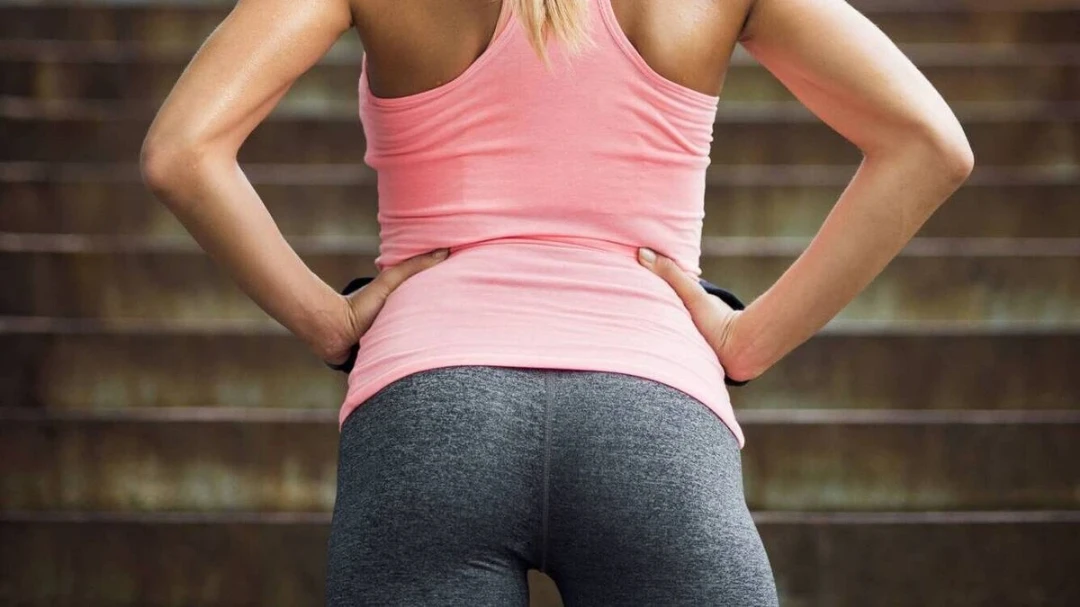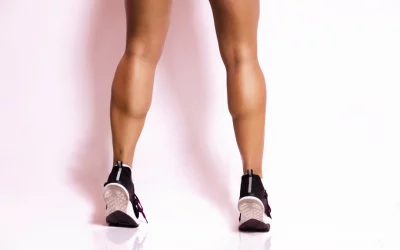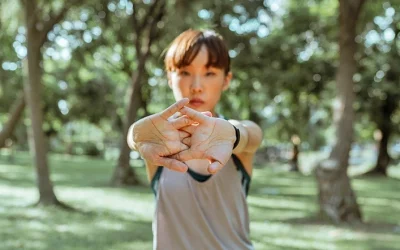Tight glutes can sneakily impact everything from your posture to your daily movements, turning simple tasks into uncomfortable experiences. Whether you’re spending long hours glued to your desk or crushing it at the gym, this powerhouse muscle group often bears the brunt, leading to stiffness and discomfort. The good news? A little stretching can work wonders, easing tension and unlocking flexibility you didn’t know you had.
In this article, we’ll dive into the most effective glute stretches that not only help reduce tightness but also enhance your mobility, so you can move freely and feel your best. Let’s get started!
Anatomy and Function of the Glutes
The glutes, comprising the gluteus maximus, medius, and minimus, are vital muscles that provide stability, movement, and strength to the hips and pelvis. The gluteus maximus is the largest and most powerful, driving movements like hip extension and external rotation, while the medius and minimus stabilize the pelvis and assist with hip abduction and rotation. Together, these muscles support posture, balance, and efficient movement, playing a key role in both everyday activities and athletic performance.
Tight glutes can disrupt this balance, limiting hip mobility and leading to discomfort in the lower back, knees, or surrounding muscles. Factors such as prolonged sitting, overuse, or muscle imbalances contribute to tightness, which can alter natural movement patterns and increase injury risk. Regular stretching and strengthening exercises are essential to maintain flexibility, alleviate tension, and ensure proper body mechanics.
Benefits of Stretching the Glutes
Stretching the glutes offers a range of key benefits that can improve both your daily activities and physical performance. The glutes play a central role in stabilizing your hips, supporting your posture, and powering movements like walking, running, and lifting.
Some benefits of stretching the glutes include:
-
Improves flexibility for a wider range of motion in daily activities and workouts.
-
Reduces tightness to alleviate discomfort in the hips and lower back.
-
Enhances physical performance by promoting better muscle activation and coordination.
-
Supports posture and alignment, reducing strain on the lower back and knees.
-
Prevents injuries by addressing imbalances and reducing overuse risks.
“By incorporating consistent glute stretches into my routine, I’ve been able to address common issues like tightness, discomfort, and limited mobility. It’s not just about improving flexibility for me—it’s about unlocking my body’s full potential for movement and strength.”
Effective Glute Stretches to Improve Flexibility and Reduce Tightness
 1. Seated Figure Four Stretch
1. Seated Figure Four Stretch
The Seated Figure Four Stretch is an easy and effective way to target your gluteal muscles, helping to improve flexibility and relieve tightness.
How to Perform the Seated Figure Four Stretch:
-
Sit on the floor with both legs extended straight out in front of you.
-
Bend your right knee and cross your right ankle over your left thigh, just above the knee, forming a “figure four” shape.
-
Keep your hands planted behind you for support and flex your right foot to protect the knee.
-
Slowly lean your torso forward, keeping your back straight, until you feel a stretch in your right glute.
-
Hold this position for up to 30 seconds.
-
Switch sides and repeat.
2. Supine Figure Four Stretch
![]() The Supine Figure Four Stretch is ideal for releasing tension in the gluteal muscles and hips, especially for those who sit for long periods or engage in repetitive movements.
The Supine Figure Four Stretch is ideal for releasing tension in the gluteal muscles and hips, especially for those who sit for long periods or engage in repetitive movements.
How to Perform the Supine Figure Four Stretch:
-
Lie on your back on a firm, comfortable surface, such as a yoga mat.
-
Bend both knees and place your feet flat on the ground, hip-width apart.
-
Cross your right ankle over your left thigh, just above the knee, forming a figure-four shape.
-
Reach your hands through your legs and grasp the back of your left thigh, gently pulling it toward your chest.
-
Keep your head and shoulders relaxed on the mat and your back in neutral alignment.
-
Hold for up to 30 seconds, then switch sides and repeat.
3. Pigeon Pose (Yoga Stretch)
The Pigeon Pose is a foundational yoga stretch known for its ability to deeply target the glutes and surrounding muscles.
How to Perform the Pigeon Pose:
-
Begin in a tabletop position on your hands and knees.
-
Bring one knee forward, placing it behind your hands, and angle the shin toward your opposite hip. Adjust the angle for comfort.
-
Extend your opposite leg straight back with the top of your foot resting on the mat.
-
Square your hips to the mat, ensuring they are aligned and facing forward.
-
Slowly lower your torso toward the floor, keeping your spine long. Rest on your forearms or extend your arms forward based on your flexibility.
-
Hold the pose for up to 30 seconds, breathing deeply to relax into the stretch.
-
Switch sides and repeat.
4. Standing Glute Stretch
The Standing Glute Stretch is a convenient and effective way to target your gluteal muscles while staying upright.
How to Perform the Standing Glute Stretch:
-
Stand tall with your feet hip-width apart and engage your core to maintain stability.
-
Shift your weight onto your left leg. Bend your right knee and place your right ankle just above your left knee, forming a figure-four shape.
-
Slowly lower into a partial squat by bending your left leg, keeping your back straight and chest lifted.
-
Once you feel a stretch in your right glute, hold the position for up to 30 seconds.
-
Return to the starting position and switch sides.
5. Reclining Twist Stretch
The Reclining Twist Stretch combines spinal rotation with glute engagement, making it an excellent choice for relieving tension and improving flexibility in the glutes, lower back, and hips.
How to Perform the Reclining Twist Stretch:
-
Lie on your back on a flat, comfortable surface with your legs extended.
-
Bend your right knee and bring it across your body toward the left side, allowing your torso to rotate slightly.
-
Extend your right arm out to the side, keeping your shoulders grounded on the floor. Rest your left hand lightly on your bent knee.
-
Hold the position for up to 30 seconds, focusing on deep breathing to relax.
-
Slowly return to the starting position and repeat on the opposite side.
Incorporating glute stretches into your routine improves flexibility and reduces discomfort, but staying consistent can be challenging. WeStretch simplifies this with guided, personalized stretching programs, offering customizable plans, visual instructions, and progress tracking.
Tips for Effective Glute Stretching
To make your glute stretches more effective and safe, follow these best practices to maximize benefits and reduce the risk of discomfort or injury:
-
Warm up beforehand: Perform light cardio activities, like walking or cycling for 5–10 minutes, to increase blood flow and prepare your muscles for stretching.
-
Focus on deep breathing: Breathe evenly, exhaling as you deepen the stretch and inhaling as you hold the position, to improve relaxation and range of motion.
-
Pay attention to form: Maintain proper alignment, such as keeping a neutral spine, to target the glutes effectively and avoid strain on other areas like the lower back or knees.
-
Progress gradually: Avoid overstretching or forcing your body beyond its limits. Aim for a gentle pull in the glutes, increasing intensity or duration as flexibility improves over time.
-
Be consistent: Stretch regularly, ideally several times a week, to achieve long-term improvements in flexibility and reduce tightness.
Exercise Smarter with WeStretch: Your All-in-One Stretching Assistant
![]() A consistent full-body stretching routine is essential for improving flexibility, supporting injury prevention, and enhancing overall well-being. Carefully following simple yet effective stretches targeting the hamstrings, hip flexors, back, quads, chest, and shoulders, individuals of any fitness level can reap the benefits.
A consistent full-body stretching routine is essential for improving flexibility, supporting injury prevention, and enhancing overall well-being. Carefully following simple yet effective stretches targeting the hamstrings, hip flexors, back, quads, chest, and shoulders, individuals of any fitness level can reap the benefits.
Regular stretching, with attention to proper form and consistency, can help you move more freely, recover faster, and feel better in everyday activities.
Looking for a way to add some fun to your stretching routine? Check out WeStretch—an app that’s like your own personal stretch coach! With tailored plans, easy-to-follow demos, and progress tracking, it’s got everything you need to keep you limber and on point. Ready to get flexible? Sign up today and let’s get stretching!
FAQ
How do you release a tight glute?
To release a tight glute, start with gentle stretches like the pigeon pose, seated figure-four stretch, or a standing forward fold to target the glute muscles.
How do you relieve glute pain?
To relieve glute pain, incorporate targeted stretches that improve flexibility and reduce tightness. Focus on moves like pigeon pose, seated figure-four stretch, or lunges to gently loosen the glute muscles.
What causes extremely tight glutes?
Extremely tight glutes can result from prolonged sitting, overuse during intense physical activities, poor posture, or muscular imbalances.
How do you release deep gluteal muscles?
To release deep gluteal muscles, incorporate targeted stretches like the pigeon pose, seated figure-four stretch, and supine glute stretch.
What are the best glute stretches for beginners?
The best glute stretches for beginners include the seated figure-four stretch, lying glute stretch, and pigeon pose.






